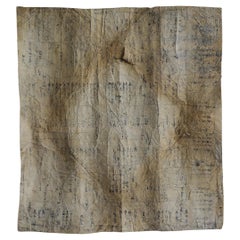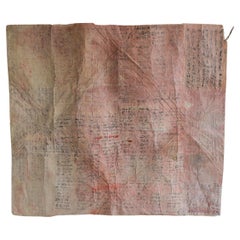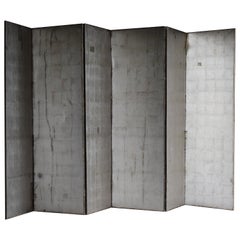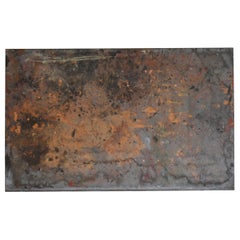Wabi Sabi Screen
Early 20th Century Japanese Taisho Paintings and Screens
Paper
Early 20th Century Japanese Taisho Paintings and Screens
Paper
Early 20th Century Japanese Taisho Paintings and Screens
Paper
Recent Sales
Early 20th Century Japanese Meiji Paintings and Screens
Cedar, Paper
Late 20th Century Japanese Showa Paintings and Screens
Fabric, Wood
Late 20th Century Japanese Showa Screens and Room Dividers
Iron
Antique 19th Century Japanese Meiji Decorative Art
Cedar
Mid-20th Century Japanese Showa Paintings and Screens
Wood, Lacquer
Mid-20th Century Japanese Showa Paintings and Screens
Wood, Lacquer
Early 20th Century Japanese Taisho Paintings and Screens
Paper
Early 20th Century Japanese Meiji Screens and Room Dividers
Wood
Early 20th Century Japanese Taisho Paintings and Screens
Pottery
Antique 19th Century Japanese Edo Paintings and Screens
Wood, Paper
Antique Late 19th Century Meiji Paintings and Screens
Silver Leaf
Mid-20th Century Japanese Primitive More Asian Art, Objects and Furniture
Wood
People Also Browsed
Antique Early 1900s Austrian Vienna Secession Benches
Beech, Bentwood
2010s American Modern Stools
Wood, Oak
21st Century and Contemporary American Chairs
Linen
Mid-20th Century Japanese Organic Modern Commodes and Chests of Drawers
Wood, Ash, Hardwood
2010s Vietnamese Sideboards
Oak
21st Century and Contemporary Organic Modern Benches
Linen, Foam, Wood
Antique 18th Century French Louis XV Fireplaces and Mantels
Carrara Marble
Antique Late 19th Century American Neoclassical Architectural Elements
Cast Stone
Early 2000s American Modern Sofas
Upholstery, Mahogany
Antique 19th Century French Louis XV Fireplaces and Mantels
Marble
2010s Vietnamese Dining Room Chairs
Oak
Vintage 1940s French Art Deco Armchairs
Fabric, Sycamore
21st Century and Contemporary American Club Chairs
Cotton, Linen, Wood, Down
Vintage 1930s French Art Deco Lounge Chairs
Upholstery, Wood, Walnut
Early 20th Century Indian Brutalist Coffee and Cocktail Tables
Wood
21st Century and Contemporary Organic Modern Paintings
Canvas, Paint
Wabi Sabi Screen For Sale on 1stDibs
How Much is a Wabi Sabi Screen?
Finding the Right Asian-art-furniture for You
From Japanese handmade earthenware pottery, originating circa 14,500 B.C. and adorned with elaborate corded patterns known as jōmon, to natural elm case pieces and storage cabinets built in Qing dynasty–era China to mid-century Thai rice-paper charcoal rubbings, antique and vintage Asian art and furniture make for wonderful additions to all kinds of contemporary interiors.
Eastern elements elevate any home’s decor. Introduce zen sensibility to your living room, dining room and bedroom with the neutral color palettes and the natural materials such as rattan, bamboo and elm that we typically associate with traditional Asian furniture. Decorative handwoven embroideries and textiles originating from India and elsewhere on the continent, which can be draped over a bed or sofa or used as a wall hanging, can be as practical as they are functional, just as you wouldn’t seek out Japanese room-divider screens — often decorated with paintings but constructed to be lightweight and mobile — merely for privacy.
With everything from blanket chests to lighting fixtures to sculptures and carvings, it’s easy to tastefully bring serenity to your living space by looking to the treasures for which the East has long been known.
For British-born furniture designer Andrianna Shamaris, the Japanese concept of beauty in imperfection isn’t limited to her Wabi Sabi collection. She embraces it in her New York City apartment as well. In the living area, for instance, she retained the fireplace’s original black marble while swathing its frame and the rest of the room in bright white.
“We left the fireplace very clean and wabi-sabi, so that it blended into the wall,” says Shamaris, who further appointed the space with a hand-carved antique daybed whose plush pillows are upholstered in antique textiles from the Indonesian island of Sumba.
In the growing antique and vintage Asian art and furniture collection on 1stDibs, find ceramics from China, antiquities from Cambodia and a vast range of tables, seating, dining chairs and other items from Japan, India and other countries.
- What is wabi-sabi furniture?1 Answer1stDibs ExpertApril 5, 2022Wabi-sabi furniture refers to tables, seats and other furnishings that reflect a specific Japanese design philosophy. It involves creating minimalist furniture that has a focus on appreciating the imperfections found in nature. On 1stDibs, find a collection of wabi-sabi furniture.
- What is an example of wabi-sabi?2 Answers1stDibs ExpertApril 5, 2022Wabi-sabi is the practice of finding the beauty in imperfections. Examples include flowers growing through cracks in the ground, or a broken ceramic bowl made whole again with its imperfections showing through. You’ll find a variety of wabi-sabi pieces from some of the world’s top sellers on 1stDibs.1stDibs ExpertApril 5, 2022One important aspect of wabi-sabi is the beauty in imperfect things, so a good example of wabi-sabi would be asymmetrical or even crude vessels and furniture. On 1stDibs, you’ll find a collection of wabi-sabi furniture and other objects from some of the world’s top sellers.
- 1stDibs ExpertMay 5, 2023The primary principle of Wabi-Sabi is to appreciate the imperfections found in nature. As a result, Wabi-Sabi emphasizes asymmetry, roughness, simplicity and the use of natural materials and finishes. On 1stDibs, shop a variety of pieces based on Wabi-Sabi principles.
- What is wabi-sabi pottery?1 Answer1stDibs ExpertApril 5, 2022Wabi-sabi pottery refers to earthenware vessels that embody the principles of a Japanese philosophy called wabi-sabi. Proponents of the idea believe that household objects should emphasize function over form, so that they satisfy needs but do not cause people to attach too much meaning to worldly possessions. There is also a focus on finding the beauty in imperfection and simplicity. On 1stDibs, find a collection of wabi-sabi pottery.
- Is Wabi-sabi a design style?1 Answer1stDibs ExpertMay 5, 2023Wabi-sabi is technically not a design style, but it has influenced design. The term Wabi-sabi refers to a philosophy that emphasizes accepting imperfection and celebrating the impermanent beauty of nature. This concept has inspired many interior design trends, such as using organic and sustainable materials, selecting upcycled and repurposed pieces and integrating furniture and decorative objects that are unfinished, unpolished and unglazed. Shop a collection of pieces inspired by Wabi-sabi on 1stDibs.
Read More
Symbols of Happiness and Rebirth Adorn This Japanese Satsuma Bowl
Decorated with white cranes and the sought-after thousand-butterflies motif, the Meiji-period vessel offers both a celebration of traditional aesthetics and a clear reflection of the era’s appetite for exquisite export pieces.
Chicago’s Pagoda Red Has a Spirited Mix of Asian Antiques and Bold New Art
For 25 years, gallerist Betsy Nathan has leveraged her keen eye and key connections to bring a unique selection of rare finds to the market.
In L.A., Gallerist JF Chen Has Long Championed Eclectic Blue-Chip Design
Now working alongside his daughter Bianca, dealer Joel Chen has presented a most covetable array of antiques, art and contemporary creations for more than 40 years.
12 Calming Spaces Inspired by Japanese Design
From cherry-blossom-adorned walls paired with glamorous lighting to wood-paneled ceilings above checkerboard-patterned chairs, these 12 spaces seamlessly blend Eastern and Western aesthetics.
Rodrigo Rivero Lake’s Mexico City Showroom Is a Museum-Worthy Trove of Spanish Colonial and Asian Antiques
The dealer and curator has spent the past 50 years amassing a collection of exceptional art, furniture and architectural elements that trace the cultural influence of the Spanish empire from Europe to the Americas and beyond.
16 Refined Asian-Inspired Interiors
These spaces exemplify how Eastern elements elevate a home's decor.




